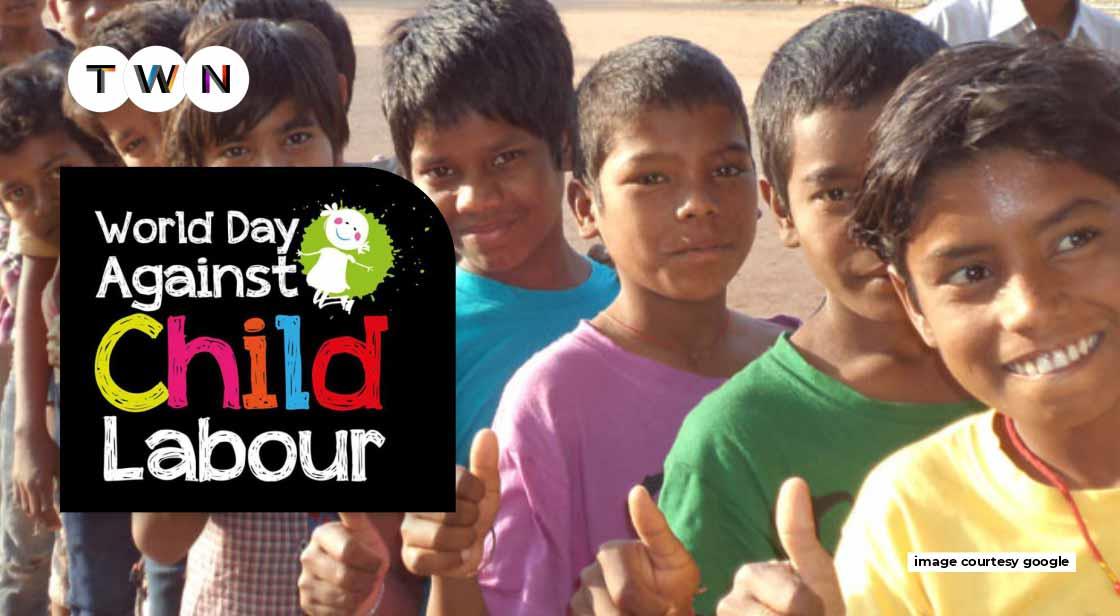
When I was a kid, I used to see a lot of kids my age working in hotels and restaurants. I had no idea that forcing a youngster to work was against the law. As I grew older, I learned that India commemorates National Anti-Child Labor Day, which made me think about how children's lives are tossed around and how they are denied basic rights. So, we've arrived to World Day Against Child Labor, also known as World Anti–Child Labor Day. It is now up to us to end this curse and improve the lives of the children who will be the planet's future.
Every child has the right to be safe from harmful influences such as child labour.
Let us raise awareness on World Day Against Child Labor (12 June) and work to make the world a safer place for our children.
Background on the International Day Against Child Labor
The International Labor Organization (ILO) established the World Day Against Child Labor in 2002 to raise awareness about the global scale of child labour and the activities and efforts needed to end it. Every year on June 12, government agencies, employer groups, civil society organisations, and millions of people throughout the world come together to highlight the plight of child labourers and what can be done to aid them.
Global leaders ratified the Sustainable Development Goals (SDGs) in 2015, which include a broader global commitment to ending child labour. The SDG target 8.7 specifically asks the international community to "take necessary steps to eradicate forced labour, end slavery, and human trafficking, and secure the prohibition and eradication of the worst types of child labour, including the hiring and use of child soldiers, and end child labour in all forms by 2025."
What exactly is child labour?
Not all child labour should be called child labour and should be prohibited. Working with children or teenagers that does not endanger their health or development or interfere with their schooling is often regarded as a pleasant experience. This can include things like helping their parents around the house, assisting in a family business, or working after school and on weekends to earn money. These activities are beneficial to children's development and the well-being of their families because they provide them with information and skills, preparing them to be useful members of society as adults.
Child labour is defined as employment carried out with the intent of harming or endangering a child in violation of international and national law. It either denies youngsters access to education or compels them to carry both a school and a work burden. Child labour is a type of child labour that has to be removed. It contains the following items:
• All forms of "unconditional" child labour, such as slavery or slavery-like practises, child trafficking, or criminal activities;
• Work done by minors who are under the legal working age, as established by law and in accordance with international standards.
Children who are sold into slavery, separated from their families, exposed to life-threatening circumstances and diseases, and/or left to fend for themselves on major city streets – sometimes at a young age – are among the most terrible kinds of child labour. The age of the child, the type and hours of work performed, the circumstances in which it is conducted, and the aims pursued by particular countries all influence the definition of "child labour." The answer is different depending on the country and the sector within it.
Child Labor: How Common Is It?
Global child labour has been gradually falling over the previous two decades, according to the International Labor Organization, but the COVID-19 pandemic threatens this trend (ILO). This year alone, an estimated 60 million people are anticipated to be living in abject poverty, forcing families to send their children to work. According to a joint statement from the International Labour Organization and the United Nations Children's Fund, a one percent increase in poverty leads to a 0.7 percent increase in child labour.
While the rest of the globe is dealing with COVID-19, data from India show that despite the epidemic being followed by a lockdown, children are still being exploited for child labour. Many youngsters were surreptitiously relocated to industries and fields to work as the coronavirus global epidemic pushed India's children out of schools (which were officially closed), worsening the country's child labour crisis.
Tags:
national anti child labor day in india, world day against child labor, anti child labor day activities
Comments
Post a Comment